 THE FOOD OASIS MUNICIPAL MARKET AT BAB DOUKKALA MARRAKECH
Dipon Bose
Ivo Lazarski
Piotr Soltys Prajwal Mathad
THE FOOD OASIS MUNICIPAL MARKET AT BAB DOUKKALA MARRAKECH
Dipon Bose
Ivo Lazarski
Piotr Soltys Prajwal Mathad
“
Zero Hunger Under a Changing Climate”
COP 22 Marrakech
-Dr. David Nabarro
Special Adviser to the Secretary General on the 2030 Agenda for Sustainable Development Goals

Acknowledgements
We are thankful to our professors, assistant professors and tutors for giving us this wonderful Opportunity to work in a global context of North Africa. It was a very diferent learning experience to situate our learning of architecture and urbanism in a Global South context, focussing on the rich and fertile research design ground of “in-betweens”.
We thank our professor Laura Montedoro , Alessandro Frigerio and Alice Buoli for guiding us through every stage of the project. It was a great insight to understand the African context in the lectures and situate ourselves to the urbanism theories.
We also thank our professors for helping us with our trip to Marrakech. We thank the Consulate of Morocco, Milan, who helped us to get the travel visa swiftly. We thank the shopkeepers, restaurant owners in Medina who allowed us to take photographs of their activities and also shared critical information with us regarding our design research.
We thank our key informants Mr. Yosef Ben Mier, Director of the High Atlas Foundation to share the work of his organisation regarding plantation of trees and changing nature of food chain in Marrakech. We thank Mr. Hassan El Hemer, founder of BioChar Maroc, to share his insights of entrepreneurial networks of food chain and food waste in Marrakech. We thank our team members for working together enthusiastically in all the stages of the studio. It was a good learning experience with the class.
5
When the stomach gets full, it tells the head to sing” -Old Moroccan
proverb

Abstract
Food and urbanism is a very complex domain of research and design for architects and urban planners. With increasing urbanisation of African cities along with the majority of the Global South, the traditional cities of Africa like Marrakech, see a complex dynamics of changing food production, processing and consumption that afects large swatches of formal and informal spaces in the city. National governments across the globe have now acknowledged, through the New Urban Agenda, the importance of local governments in achieving the 2030 Agenda, with food and good nutrition being a core element (FAO, 2018)
With increasing globalisation of the food market, more and more developing countries are seeing massive infow of supermarkets and new food products owing to the Western models of urbanisation coupled with wider acceptance of Western urban lifestyle and spaces associated with them. In urban areas, diets are shifting towards increased consumption of food away from home (from street vendors, modern fast food chain, restaurants) with a large share of packaged and processed food often rich in salt, sugar and fat, leading to obesity and associated diet-related non-communicable diseases such as heart disease and diabetes (Marocchino, Cabannes, 2018). In the case of Marrakech, similar patterns of urbanisation over the last decades has created some problems like nutritional shift and decreasing spaces of sales for fresh fruits and vegetables which was traditionally facilitated by informal vendors.
With a rich food culture and a society closely dependent on the act of food processing and food sales, the numerous varieties of food sale in the old Medina area of Marrakech becomes the polycentric model of food urbanism where social interaction, economic interaction and cultural interaction happens at the restaurants, street food stalls, food squares like the Jma el Fna, the fruit juice stalls, fruit, vegetable sellers, souks, marketplaces, spice markets etc. zeroing down to the smallest actors like juice sellers, cigarette sellers and nut - snacks sellers. In order to preserve the rich network of the food sale spaces and shopkeepers, it is imperative to create a hybrid urban space that caters to the diverse layer of food sale spaces as well as ft perfectly to the new modern urbanisation models of Marrakech.
Food Urbanism
In-Between
Informal vendors
Shared spaces
Hybrid market
This research and urban design project strategies to create a sustainable network of food producers, processors and consumers in Marrakech by making the food sellers the pivotal user type being catered to. The in-between urban space near Bab Doukkala bus stand has been designed as a polyfunctional, versatile, adaptive market space that absorbs the high fux of restaurant owners, street food stalls, informal fruit vegetable vendors and minor food sellers. The urban design insert functions in sync with the transportation networks around and also tries to grow incrementally adapting to the precarious site conditions. The wall of Medina stands as a backdrop to the new urban architecture that creates a safe food oasis among one of the busiest urban locations of Marrakech.
7
“
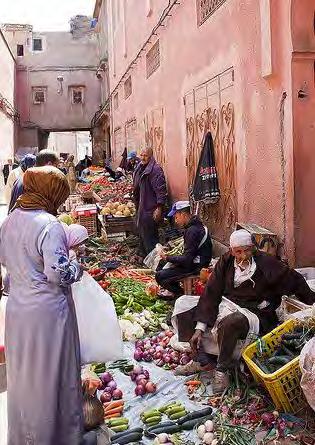
Contents
Stage 1
1.1 Marrakech - situating in the in-betweens
1.2 Pintrest Reconnaissance survey
1.3 Food Urbanism - Why do cities need to think about food?
1.4 Changing Morocco - food, hunger and healthy cities
1.5 Why should we bother about food and the city?
1.6 The inequalities in food access - Europe & Africa
1.7 Marrakech - A haven of food (History of food)
1.8 Actor-Network Diagram
Stage 2
2.1 The Territorial scale : Maghreb, Atlas and the valleys of food
2.2 The strategic location - in between the desert and Atlantic
2.3 Existing case of food production, and consumption in Marrakech
2.4.1 Interviews : Mr. Yosef Ben Mier
2.4.2 Interviews : Mr. Hassan El Hemer
2.5 The Problem setting at territorial level
2.6 The strategy at territorial and metropolitan level
2.7 The long road - Mobility
2.8 The Mother-Sister relationship
2.9 Case studies & theoretical framework
2.10 Manifesto
Stage 3
3.1 The Urban site - Bab Doukkala
3.2 Urban Problem Setting
3.3 Introduce site - photos and diagrams (maps)
3.4 Urban strategy
3.5 The Markets as a Urban architecture
3.6 Hybrid spaces - in between the formal and the informal
3.7 Transport as a primary foundation to food mobility
3.8 The Architecture Strategy
3.9 The Design
3.10 Visualisations and physical model
References and bibliography
9
12 14 18 20 22 24 26 28 36 38 40 42 48 52 56 58 62 64 68 72 74 78 82 86 88 90 94 98 110 124
STAGE 1
SPATIAL AND CRITICAL ANALYSIS OF CONTEXT
Marrakech and the food chain
1.1 Marrakech - situating the in-betweens
Marrakech is a 1000 year old city founded at the start of the second millennium. Majorly ruled and developed by Arabic chieftains, this geography of Marrakech is a melting point of many diferent layers of Maghreb history. The city was founded at the foothills of the Atlas mountains which was primarily dominated by Berber tribes and farmers. The position of Marrakech in between the mountain and the desert, in between the trade routes, in between the Mediterranean and Sahara desert and lately in-between Europe and Africa has set the city to many interesting urban conditions.
The topography of Marrakech is relatively fat with river valleys in East, West and North. The Atlas mountains are on the South side. The rainfall on the mountains brings water all around the city and supports agriculture and food cultivations like olive, oranges, wheat etc. The herders in the mountains and the desert traditionally supplied good quality meat and poultry products to the city. Being on of the important trade stops in the Maghreb, the city evolved into a rich food culture destination over the centuries.

12 13
fg1
1.2 Understanding Marrakech - Media report
The frst exercise done in order to get acquainted with the city of Marrakech was to collect online data and photograph resources with respect to the chosen theme of food. The photos were collected in Pintrest as a library of photographs. It could be noted that most of the photographs showed a surreal imagination of the Oriental markets and food culture of Marrakech. Most of the photographs belonged to the Medina area with colourful food, kitchen and serving utensils that showcased local art, craft and love for social spaces.
The internet based resources were used to collect news and media reportings on the current state of the art topics related to urbanism. The issue of food production, changing agriculture patterns and new food chains were reported in the news and research reports. Reports of international agencies like Food and agriculture Organisation (FAO), Morocco World News and research papers of leading universities in Morocco, Europe and USA were used to zero down to the issue of food chain
The frst exercise done in order to get acquainted with the city of Marrakech was to collect online data and photograph resources with respect to the chosen theme of food. The photos were collected in Pintrest as a library of photographs. It could be noted that most of the photographs showed a surreal imagination of the Oriental markets and food culture of Marrakech. Most of the photographs belonged to the Medina area with colourful food, kitchen and serving utensils that showcased local art, craft and love for social spaces.
The internet based resources were used to collect news and media reportings on the current state of the art topics related to urbanism. The issue of food production, changing agriculture patterns and new food chains were reported in the news and research reports. Reports of international agencies like Food and agriculture Organisation (FAO), Morocco World News and research papers of leading universities in Morocco, Europe and USA were used to zero down to the issue of food chain

14 15
fg2

16 17 fg3
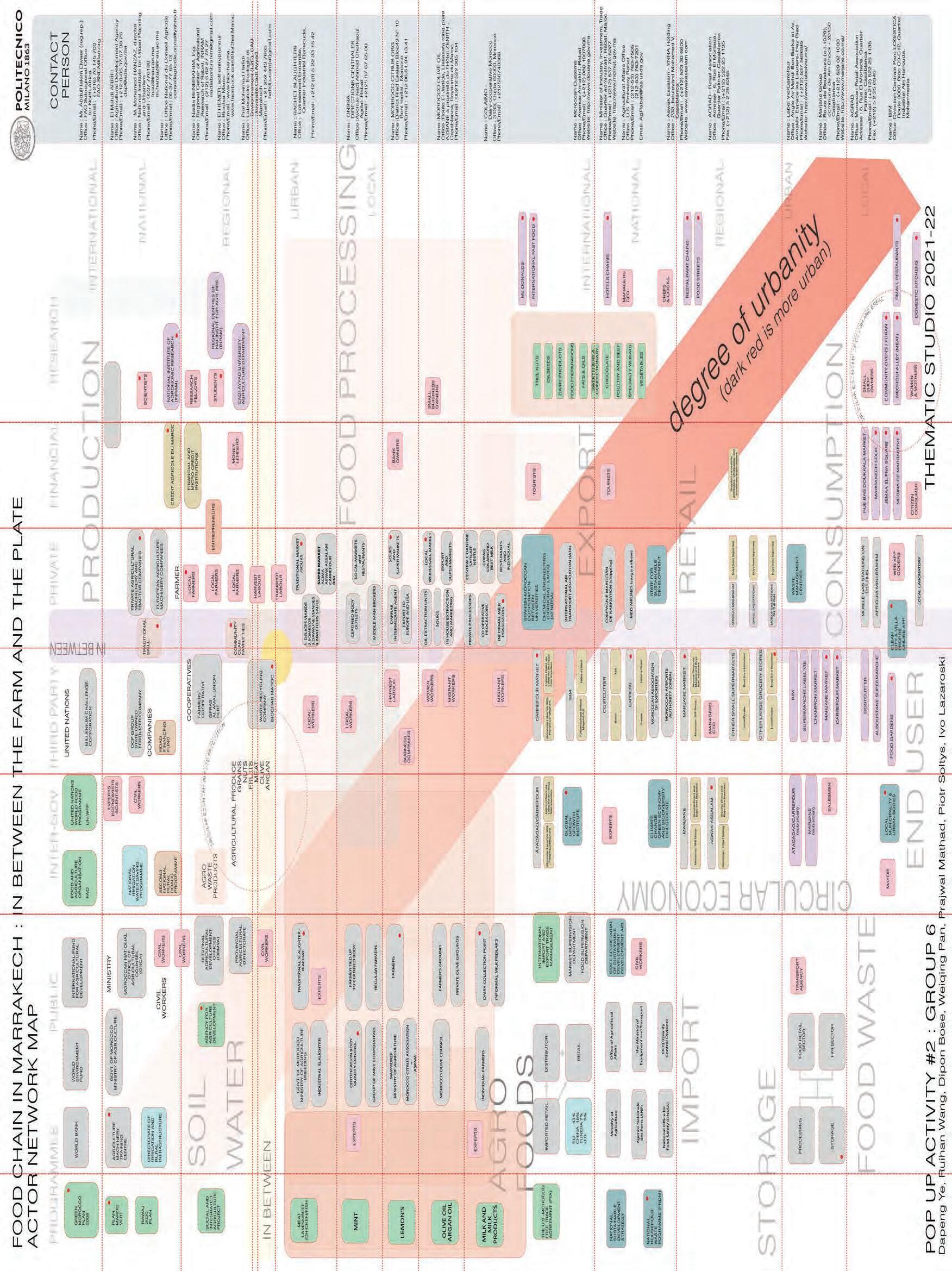
1.8 Actors network diagram a broader variant fg15
1.8 Actors network diagram a simplifed variant
ENTERPRENEURS FINANCIAL AND MICRO CREDIT INSTITUTIONS
CADI AYYAD UNIVERSITY AGRICULTURE DEPARTMENT
CENTRES OF AGRICULTURAL RESEARCH (IDGAR)
NATIONAL INSTITUTE OF AGRONOMIC RESEARCH
governmental 3rd party inbetween
retail consumption
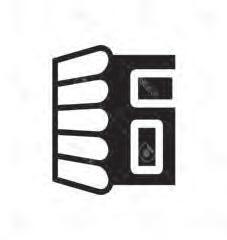
AGRICULTURAL MACHINERY AND TRACTOR COMPANIES
CIVIL WORKERS

RETAIL CORPORATIONS MARJANE HOLDING ASWAK ASSALAM
REGIONAL HYPER MARKETS SUPPLY DISTRIBUTORS
RETAIL STORAGE
RETAIL CORPORATIONS MARJANE HOLDING ASWAK ASSALAM
SMALL “MOM AND POP” MARKETS OTHER SUPERMARKETS
STREET FOOD INFORMAL MARKETS

FOOD QUALITY CONTROL AGENCY
IMPORTED RETAIL
AGRICULTURAL MACHINERY AND TRACTOR COMPANIES
CERTIFIED/INFORMAL FARMERS INFORMAL MILK PEDLARS
DEGREEOFURBANITY
FOOD GARDENS MOBILE GAS STATIONS ON THE RUN
CLEAN CITY AND VILLA PROPRE ONLINE APP
INTERNATIONAL AIR TRANSPORT ASSOCIATION
CREDIT AGRICOLE DU MAROCCO production food processing agricultural foods import /export
EXPERT FIELDS’ PROGRAMMES STARTUP ENTHUSIASTS’ FUNDS FARMERS’ UNIONS/ COOPERATIVES
SHELL GAS STATIONS WASTE RECYCLING COMPANIES CIVIL WORKERS
FOOD AND AGRI. CORPORATIONS SLAUGHTER
INTERNATIONAL FUNDING
GOVERNMENTAL AND INSTITUTIONAL SUBJECTS
AGRICULTURAL AGENCIES, OFFICES, DIRECTORATES
WASTE PRODUCT SUBJECTS
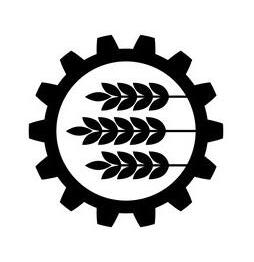
FARMERS’ COOPERATIVES
MINISTRY OF AGRI. BREEDING QUALITY CONTROL AGENCIES DAIRY COLLECTION POINTS
DCQ (QUALITY CONTROL DIVISION) OFFICE OF AGRICULTURAL AFFAIRS
MINISTRY OF AGRICULTURE
MEAT; MINT; LEMONS; OLIVES; ARGAN OIL; MILK
AGENCE NATIONALE DES PORTS
NATIONAL OFFICE FOR FOOD SAFETY

MINISTRY OF TRANSPORT
MARJANE HOLDING ASWAK ASSALAM
COMPAGNIE MAROCIANI DE NABIGATION ( SHIPPING ) ON RANCH TOURISTIC RESTAURANTS
RETAIL HR SECTOR
CITY MAYOR
international international
private nationalregional regional regional urban
urban
local urban
local national international
public
+ local
+
+
inbetween
inbetween
MARRAKECH
JEMAA EL FNA MAIN SQUARE RUE BAB DOUKKALA MARKET COMMUNITY OVENS
FURAIN DOMESTIC KITCHENS SMALL RESTAURANTS MECHOUI ALLEY
MEAT )
SOUK MEDINA OF MARRAKECH
/
(
MOROCCAN ASSOCIATION
MOROCCAN
TRANSPORT AGENCY
STORAGE PROCESSING
OF EXPORTERS
AIRPORTS AUTHORITY
fg15
STAGE 2
URBAN STRATEGY
Linking the farm to the plate from peri-urban Marrakech to Medina
2.1 The territorial scale: Maghreb, Atlas and the valleys of food
The problem as being set on the territorial scale, it was approached to investigate through analytical maps and trend diagrams. Some of the main challenges for Marrakech at a territorial scale include the seasonal wastage of food and especially during Ramadan; The lifestyle disorders and health issues; a lot of green spaces and agroland taken over by construction; poor and innefcient connection and distribution of goods. Some of the factors causing these problems include:
the lacking of efcient storage spaces, large transport distances, lack of circular economy loops, decreasing sources of healthy food sales points, lack of traditional food production processes, lack of nutrition/health/ftness awareness, increasing urbanisation, lack of integration of green spaces in new urban planning, less popularity of agriculture in urban areas.
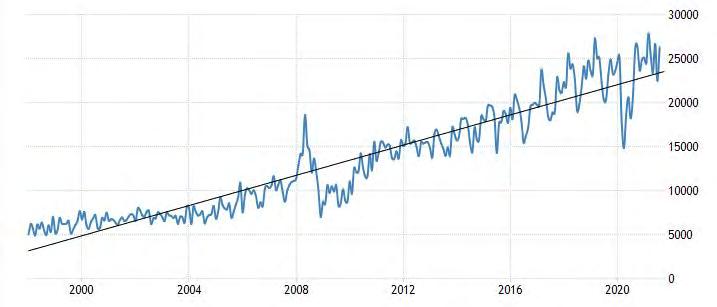



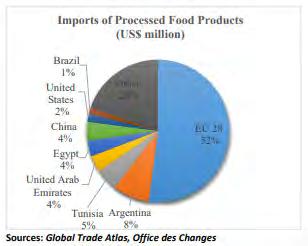
Consumption
CONSUMPTION


40 41
FOOD INDUSTRY AND EXPORT country scale Food Chain in Marrakech Group 6 // 6 city scale Marrakech Export Network Food factories and warehouses are mainly distributed in the northwest corner of the city, white scattered in the West and southwest. Transportation facilities mainly spread to the north, west and southwest. Natioanl Export Infrastructure These seaports are mainly connected by railways and highways. Morocco's railway has not yet formed a national network, mainly distributed along the main cities in the west. Marrakech is,tonnected to the nearest seaports of Safn and Essaouira by railway and highway FOOD INDUSTRY AND EXPORT country scale Food Chain in Marrakech Group 6 // 6 city scale Marrakech Export Network Food factories and warehouses are mainly distributed in the northwest corner of the city, white scattered in the West and southwest. Transportation facilities mainly spread to the north, west and southwest. Natioanl Export Infrastructure These seaports are mainly connected by railways and highways. Morocco's railway has not yet formed a national network, mainly distributed along the main cities in the west. Marrakech is,tonnected to the nearest seaports of Safn and Essaouira by railway and highway Food industry and Export source: Ofce des Changes M ET/STO GE region scale Food Chain in Marrakech TRADICIONAL MARKETPL ACES AND STORES IN MEDINAAND FRENCH PART OF CITY The biggest markets of supermarkets in city centre is in post colonial part. What is more souk's are situated only. M ET/STO GE region scale Food Chain in Marrakech TRADICIONAL MARKETPL ACES AND STORES IN MEDINAAND FRENCH PART OF CITY The biggest markets of supermarkets in city centre is in post colonial part. What is more souk's are situated only.
source: statista.com
country scale Food Chain in Marrakech FOOD PRODUCTS PROCESSING ACTORS ctors play imporatant roll in the perspecti e of local scale as they are the end part of the marketing chain who can manuplate the needs and supply of the goods reaching the goods to the consumer with sustainable price, freshness in daily basis. FOOD PRODUCTS PROCESSING ACTORS ctors in uence on food processing aries for each product , Slaughtering ones for meat , milk collection ones for dairy products,porcelian industries, uality check and packing for mint and Extraction industries for oli e and oil. PROCESSING country scale Food Chain in Marrakech FOOD PRODUCTS PROCESSING ACTORS ctors play imporatant roll in the perspecti e of local as they are the end part of the marketing chain who can manuplate the needs and supply of the goods reaching the goods to the consumer with sustainable price, freshness in daily basis. FOOD PRODUCTS PROCESSING ACTORS ctors in uence on food processing aries for each product , Slaughtering ones for meat , milk collection ones for dairy products,porcelian industries, uality check and packing for mint and Extraction industries for oli e and oil. Processing
Market/Storage
PROCESSING
region scale Food Chain in Marrakech elationship between restaurants and other places In terms of location, There are many connections between restaurants, souks, and religious places that people often go to . t the same time, these areas are also closly connected to the roads of the city.
region scale Food Chain in Marrakech elationship between restaurants and other places In terms of location, There are connections between restaurants, souks, and religious places that people often go to . t the same time, these areas are also closly connected to the roads of the city.
CONSUMPTION
healthy food Morrocian access source: sciencedirect.com fg16
2.2 The strategic location: in between the desert
and the Atlantic
Spatialization of the analysis into synthetic cartographic representation, with multiple points of view of separate diagrams are at overlap. Here we want to locate the key spaces and areas we have been focusing on. Some early ideas about the potential area(s) of intervention.

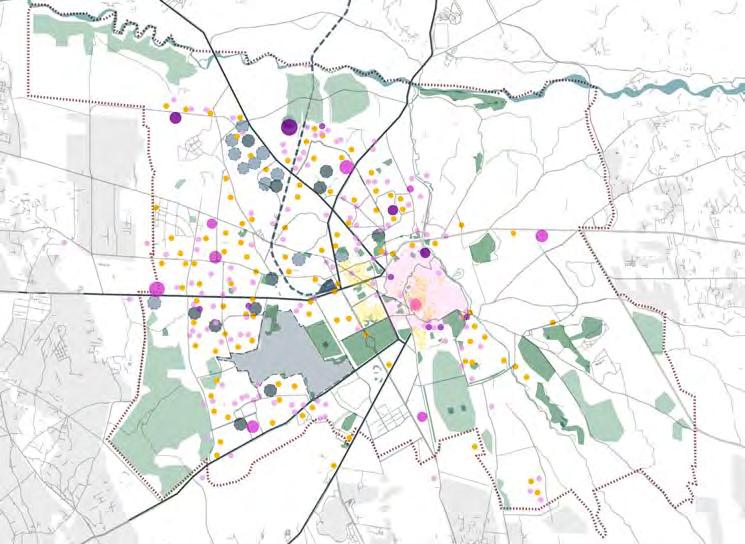
44 45
OVERLAP form food chain / highlight target area PRODUCTION EXPORT PROCESSING M CONSUMPTION OVERLAP form food chain / highlight target area Food Chain in Marrakech Group 6 // city scale PRODUCTION foutside armland farmland green space EXPORT airport train station railway highway food factory storage PROCESSING M ET/STO GE souk's district main tradicional marketplace main marketplace marketplace shopping mall supermarket main shopping street CONSUMPTION restaurant commercial area fg18
RESULT
Some early ideas about the potential area s of inter ention
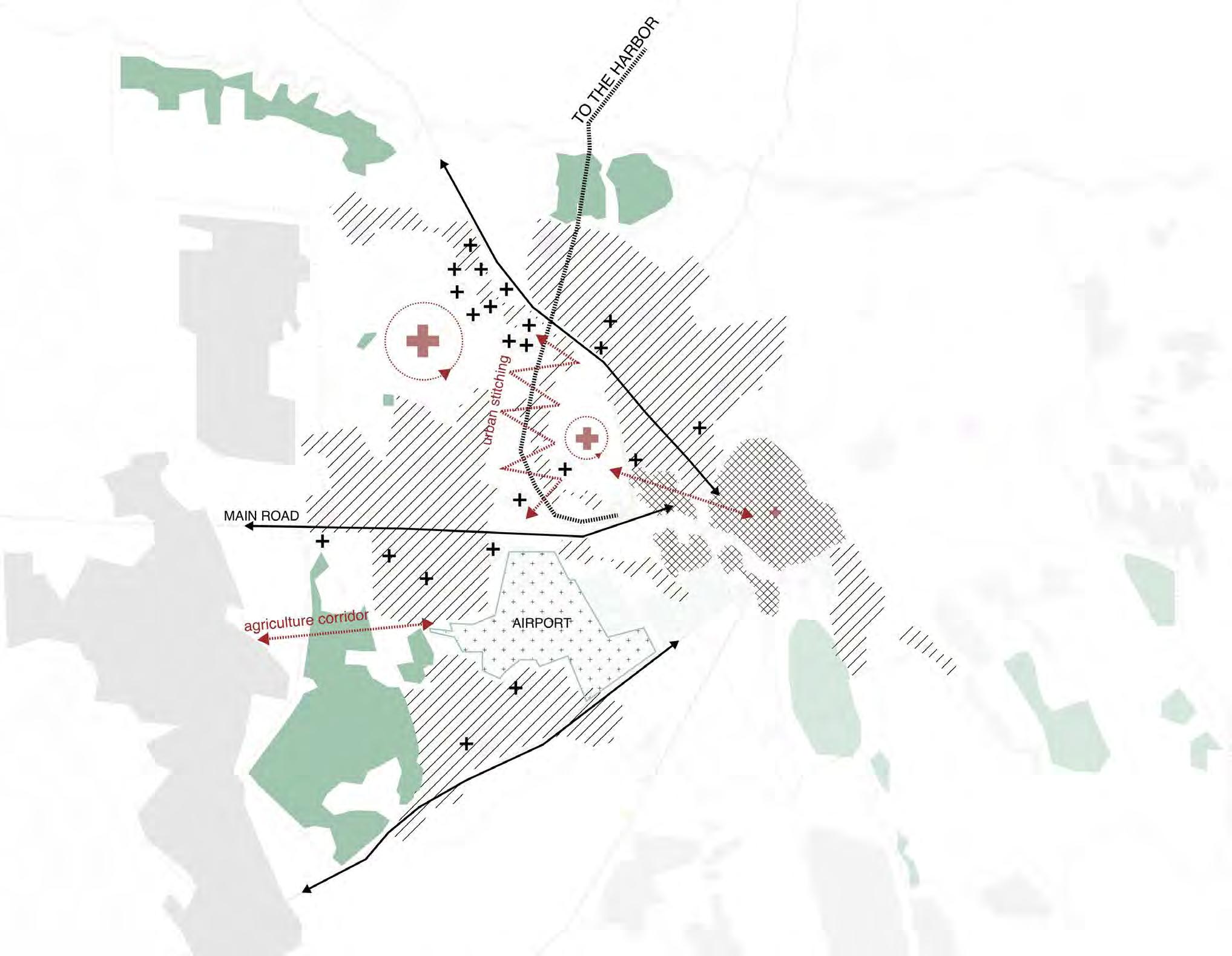
URBAN FARMLAND
HABITAT AND ACTIVITIES
IMPORTANT PUBLIC MARKET
46 47 Food Chain in Marrakech map where to clearly locate the key spaces and areas you ha e been focusing on
TRANSPORTATION airport, transport
area, restaurant, market
residential
processing, export food bank, food i ing,
FOOD FACTORY
OF THE ANALYSIS The key results of the analysis what you ha e learned about the topic so far Food Chain in Marrakech Group 6 // city scael Spatiali ation of the analysis into synthetic cartographic representations at least one map where to clearly locate the key spaces and areas you ha e been focusing on Some early ideas about the potential area s of inter ention TRANSPORTATION airport, rail way, main road transport node, food storage HABITAT AND ACTIVITIES residential area, restaurant, market URBAN FARMLAND IMPORTANT PUBLIC MARKET FOOD FACTORY processing, export FOOD CHAIN farmland food factory consumption food bank, food experience, food neighborhood FOOD AXIS centre fmarket garden target area railway urban stitching target area roduct, production, isit i ing, consumption, experience fg19
2.3 Exhisting case of food production and consumption in Marrakech
Food chain: “The series of processes by which food is grown or produced, sold, and eventually consumed.”
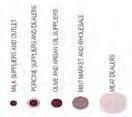
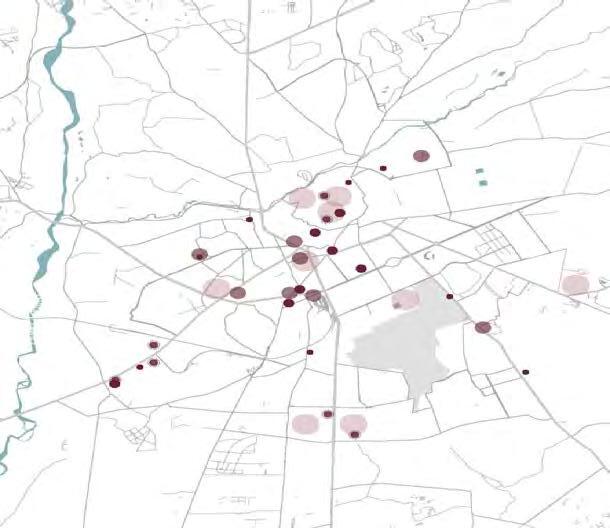





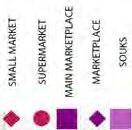
48 49
PROCESSING country scale Food Chain in Marrakech Group 6 // 6 city scale FOOD PRODUCTS PROCESSING ACTORS ctors play imporatant roll in the perspecti e of local scale a s they are the end part of the marketing chain who can manuplate the n eeds and supply of the goods reaching the goods to the consumer with sustainable price, freshness in daily basis. FOOD PRODUCTS PROCESSING ACTORS ctors in uence on food processing aries for each product , Slaughtering ones for meat , milk collection ones for dairy products,porcelian industries, uality check and packing for mi nt and Extraction industries for oli e and oil. M ET/STO GE region scale Food Chain in Marrakech Group 6 // city scale STORAGES AND MARKETPLACES IN Tradicional souk s and marketplaces are situated in the oldest part of city. Shopping malls and most of supermarkets are in north and west part. TRADICIONAL MARKETPL ACES AND STORES IN MEDINA AND FRENCH PART OF CITY The biggest markets of supermarkets in city centre is in post colonial part. What is more souk's are situated only. fg20
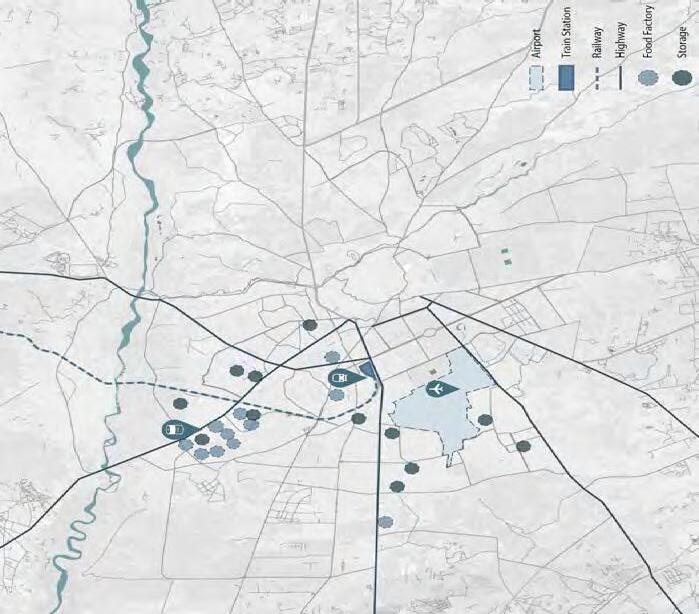

Marrakech Export Network
Food factories and warehouses are mainly distributed in the northwest corner of the city, white scattered in the West and southwest. Transportation facilities mainly spread to the north, west and southwest.

estaurant distribution
It can be seen that the distribution of restaurants in Marrakec h is concentrated in some areas of commercial acti ities. These areas ha e many places for dining, accommodation, and shopping, and they are located in the west and middle part of the city.
Natioanl Export Infrastructure
These seaports are mainly connected by railways and highways. Morocco's railway has not yet formed a national network, mainly distributed along the main cities in the west. Marrakech is,ton nected to the nearest seaports of Safn and Essaouira by railway and highway
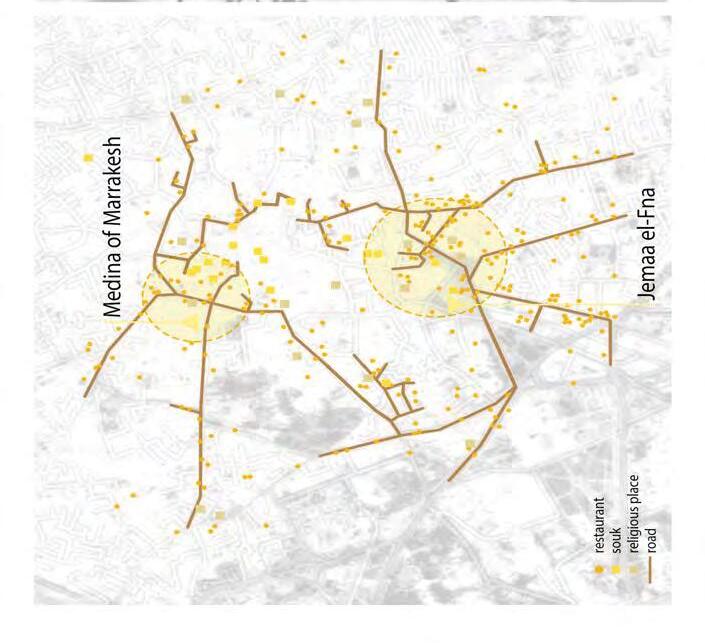
elationship between restaurants and other places
In terms of location, There are many connections between restaurants, souks, and religious places that people often go t o . t the same time, these areas are also closly connected to the ro ads of the city.
Food Chain in Marrakech
50 51 EXPORT INFRASTRUCTURE country
Group 6 // city
scale Food Chain in Marrakech
scale
CONSUMPTION region scale
Group 6 // city
scale
fg20















MAIN FOOD PRODUCTS OF MARRAKECH




62 63 2.5
territorial level THE PLATE
MAIN PROBLEM SETTING Top 10 Local Best Products: - Tree Nuts - Sweeteners & Confectionary - Oilseeds - Chocolate - Dairy Products - Poultry and Beef - Food Preparations - Specialty wheats - Fats & Oils - Vegetables National Boundaries Railway Highway Station Seaport Airport Processed foods Mint Producer Porcine Manufacturers Milk Processing Meat Slaughtering Olive Oil Extraction Local planting foods Nut - nut Fruit - orange Vegetable - cabbage IMPORTS AND EXPORTS FOOD PRODUCTS OF MOROCCO MAIN FOOD PRODUCTS OF MARRAKECH PROBLEM SETTING Food Imports- Agricultural and Related Products total (2020) Food Exports- Agricultural and Related Products total (2020) $ 7.2 $ 6.4 Top 10 Local Best Products: - Tree Nuts - Sweeteners & Confectionary - Oilseeds - Chocolate - Dairy Products - Poultry and Beef - Food Preparations - Specialty wheats - Fats & Oils - Vegetables National Boundaries Railway Highway Station Seaport Airport Legend: Processed foods Mint Producer Porcine Manufacturers Milk Processing Meat Slaughtering Olive Oil Extraction Local planting foods Nut - nut Fruit - orange Vegetable - cabbage MARKETS - problematic Marché de dattes SOUKS - more effcient Jemaa el-Fna activity point · well-traveled · well-organized · convenient fg26 fg25
The Problem setting at
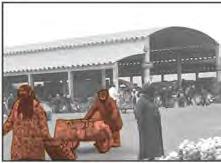
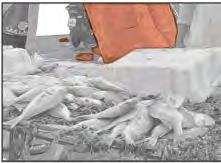


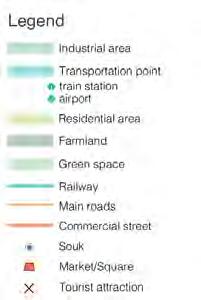

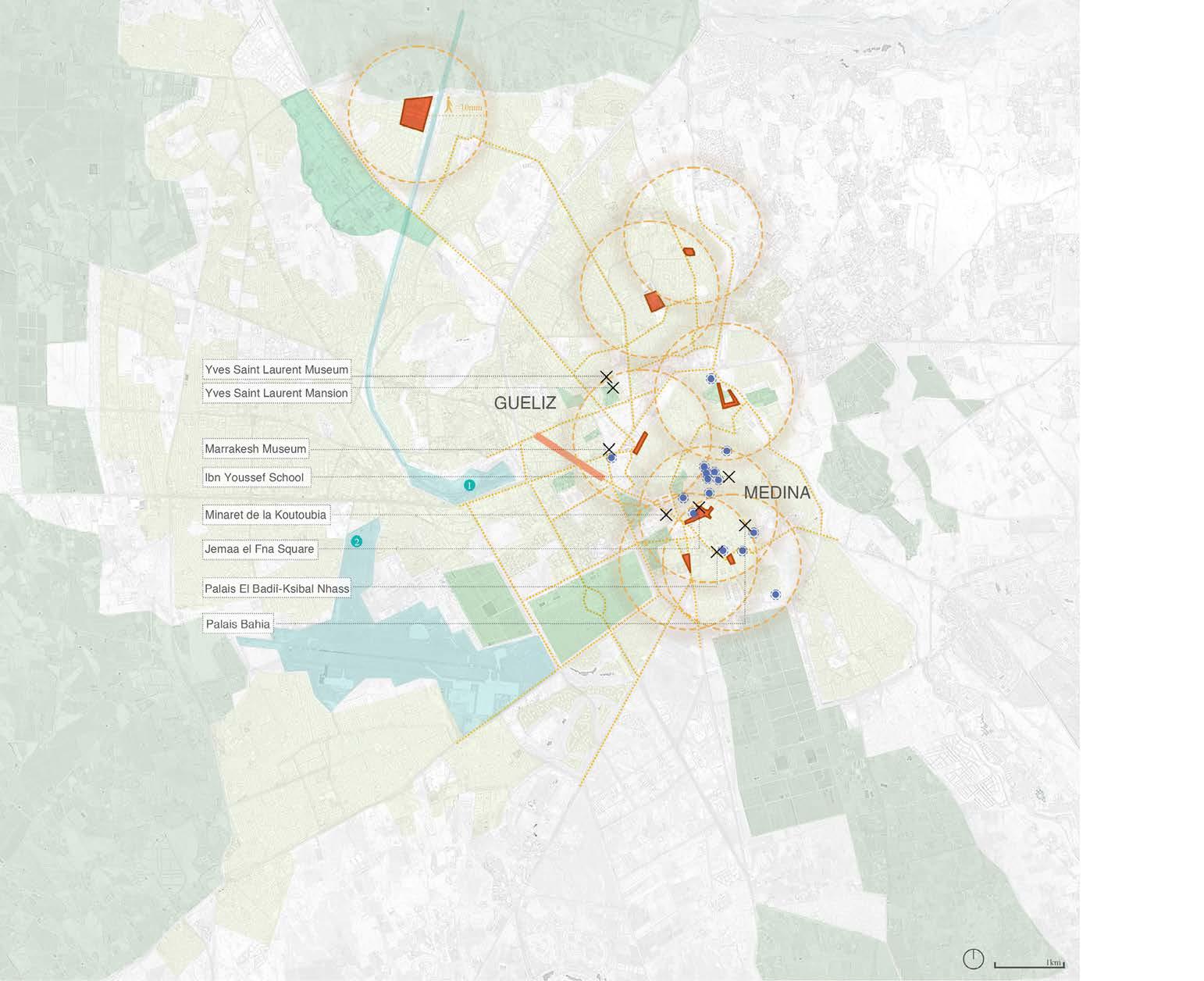


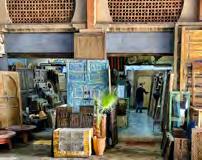






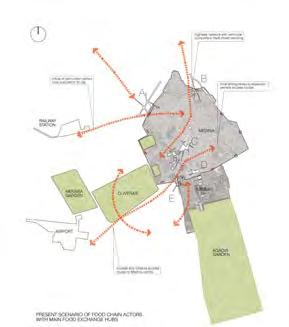

64 65 MAIN PROBLEM SETTING PRODUCTION foutside armland farmland green space EXPORT airport train station railway highway food factory storage PROCESSING MARKET/STORAGE souk's district main tradicional marketplace main marketplace marketplace shopping mall supermarket main shopping street Problem:NOT CONVENIENT 1 2 4 3 5 1 2 3 4 5 MARKETS - problematic Marché de dattes Problem:POOR SANITATION Market El Kheir Problem:LACK OF FACILITIES Marché Aux Puces El Khemi Problem:LACK OF MANAGEMENT Market outside the city walls Problem:BADLY ORGANIZED Souk Lalla Rkia SOUKS - more effcient Jemaa el-Fna Souk Semmarine Doors Souk el Khemis Souk des teinturiers Souk Des Epices activity point · well-traveled · well-organized · convenient actors TIMELINE OF URBANIZATION VS FOOD CHAIN NETWORKS PRODUCTION foutside armland farmland green space EXPORT airport train station railway highway food factory storage PROCESSING MARKET/STORAGE souk's district main tradicional marketplace main marketplace marketplace shopping mall supermarket main shopping street CONSUMPTION restaurant commercial area HABITAT AND ACTIVITIES residential area, restaurant, market URBAN FARMLAND FOOD FACTORY processing, export Problem:BADLY ORGANIZED
HOW TO FOCUS ON MARKET EMERGE ALL INFORMATION EXTRACT IMPORTANT INFORMATION TIMELINE OF URBANIZATION VS FOOD CHAIN NETWORKS MAIN PROBLEM SETTING FOOD CHAIN ANALYSIS Agricultural and Plantation zones around Marrakech FruitVegetable - cabbage PRODUCTION foutside armland farmland green space EXPORT airport train station railway highway food factory storage PROCESSING MARKET/STORAGE souk's district main tradicional marketplace main marketplace marketplace shopping mall supermarket main shopping street CONSUMPTION restaurant commercial area HABITAT AND ACTIVITIES URBAN FARMLAND processing, export 1 3 PHONE INTERVIEW WHYWEFOCUSONMARKET HOW TO FOCUS ON MARKET DATA ANALYSIS Marrakech is also a small agricultural country, but it exports so much that its people earn virtually nothing and remain poor. Export network and food products processing actors Marketplaces and restaurant distribution EMERGE ALL INFORMATION EXTRACT IMPORTANT INFORMATION TIMELINE NETWORKS fg27 fg28
WHYWEFOCUSONMARKET
2.6 The strategy at territorial and metropolitan level
The strategy to make the food chain efcient is catered by solving the spatial problems of the target areas through interlinking, accentuating, adding, eliminating and organising the urban elements of the spaces in examination. The structural typology and their adjacencies were strategically solved to facilitate the accessibility of fresh fruits, vegetables and other foods to all groups of population.
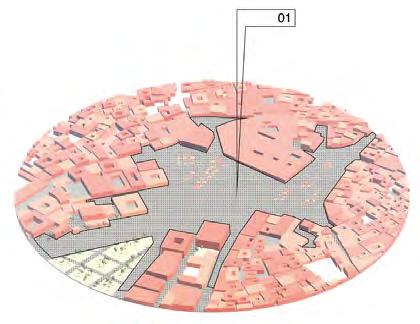
01 Unidirectional monumental open space
Articulation of vending space in modular space to cater festival crowd pattern


02 BOTTLE NECKING Street intervention + waste management Creating breathing and buffer spaces

01 Unidirectional monumental open space
Articulation of vending space in modular space to cater festival crowd pattern


01 Informal parking spaces
02 Unused Intermediate buffer spaces
02 Undefined entry and exit points
Integrating with river bank and connecting it to market
Introduction of funnel spaces to accommodate and distribute crowd 01 Disorganized space

Reassigning breathable supportive functions related to market

66 67
Problem JARDIN
Solution
DE BAB EL KHEMIS
Problem
Solution
BAB DOUKKALA
Problem
Solution
JEMAA EL-FNA
Problem
Solution
JEMAA EL-FNA
fg29


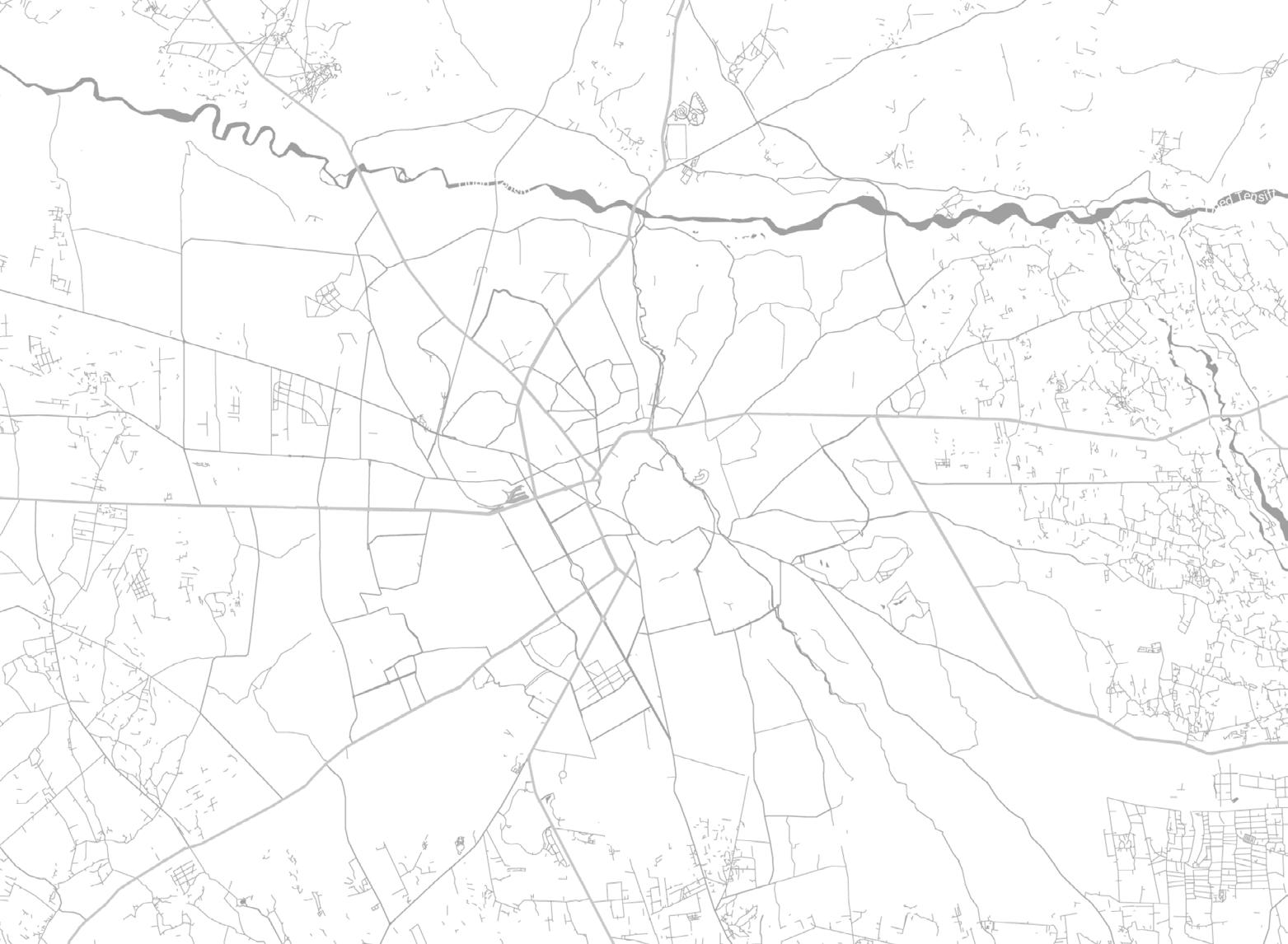



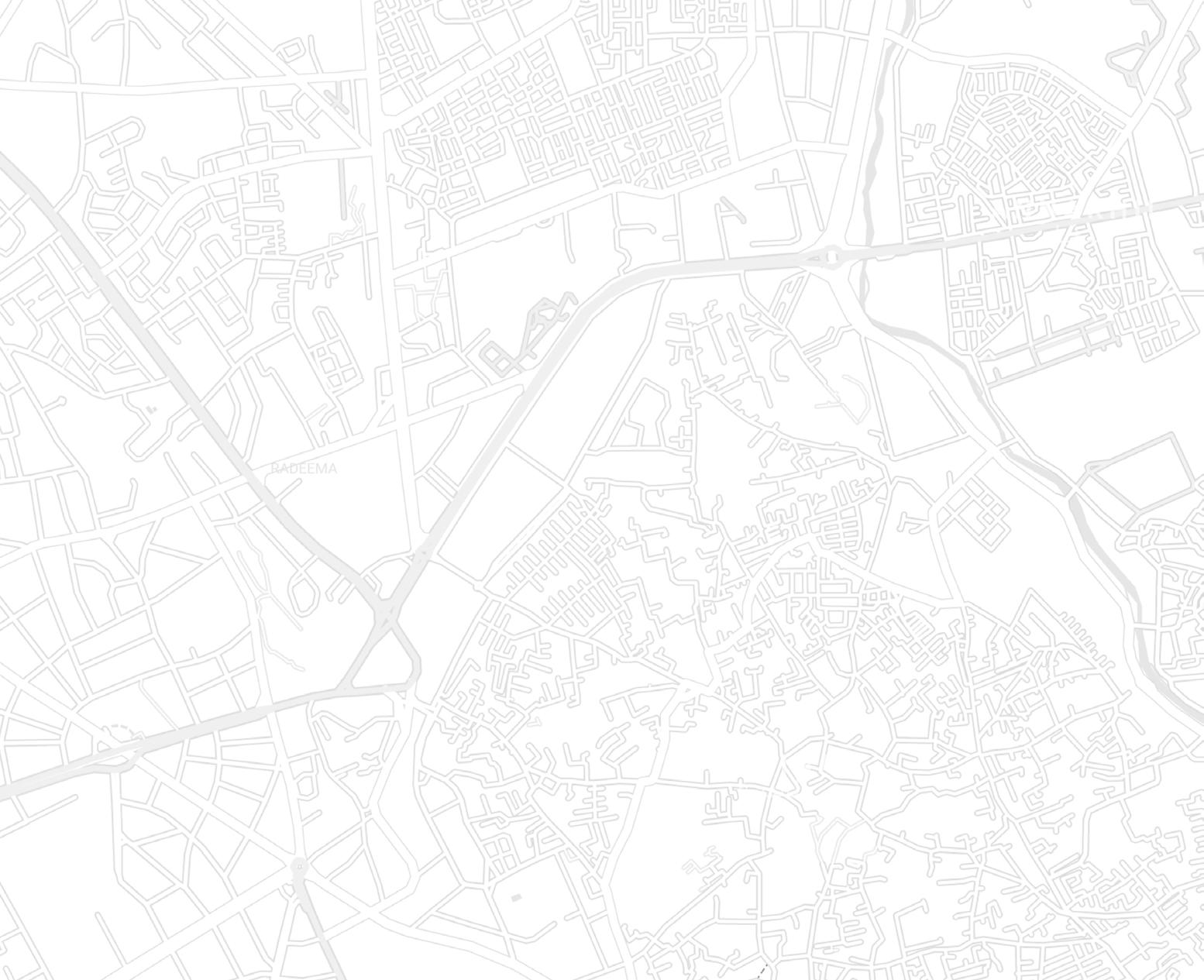



Legend BAB DOUKKALA STRATEGY Exsiting Green New Green Market Extension Small Scale Catering Area Existing Market Secondary Wholesale Area Project Area Tourist Path
EL
STRATEGY Residential Area Near Medina Exsiting Green Existiing Farmland Market Extension Existing Market Legend Residential Area Near Medina Exsiting Green New Green Shopping Street Gates Garden Market Extension Existing Market Project Area Transit Hubs Tourist Path
SCALE STRATEGY Legend TERRITORY STRATEGY
Area in Marrakech Port Farmland
Whole Sale Market
Cooperative Market Vendors Transit Space
Extension
Whole Sale Market
Market Whole Sale Market
Station Highway fg30
BAB
KHEMIS AREA
URBAN
Residential
Farmers
Intermediate
Market
Secondary
Existing
Freight
2.7 The long road: Mobility
SYSTEM FOR URBAN DESIGN
LINEAR SITE SYSTEM FOR URBAN DESIGN
SISTER SITE 1
SISTER SITE 2
SISTER SITE 1
SISTER SITE 2
SISTER SITE 3
MOTHER SITE 1
SISTER SITE 3
MOTHER SITE 1
70 71
accessibility creates
fg31 fg32
72 73 fg32
2.8 The Mother-Sister relationship spaces
As one of the challenges we foresaw in previous stages, was the not-so-efcient distribution, connection, processing and trade of goods. This is why one of the strategies on a territorial scale we are proposing is the so-called mother-sister system, where spaces of bigger hierarchy support the smaller ones, creating a hierarchical network for better distribution thorughout. Here we show a diagramatic schema of how the system would work.



74 75
MEDINA
CITYZONE-A CITYZONE-B MAIN CONNECTION X1 X2 X3 X4 X5 S1 S2 S3 S4 C1 C2 C3 M1 M2 M3 S5 MAPPING fg33 fg33
BUILTBETWEEN BORDERANDCITY


2.10 Manifesto fg40
STAGE 3
URBAN DESIGN EXPLORATION
Creating a hybrid market for formal and informal fruit, vegetable and food sellers In-between the wall of Medina and Villa Nouvel
3.1
The Urban site - Bab Doukkala
The rhythm of daily life
After in-depth analysis of Five strategical location in and around the periphery of medina which was selected on the basis of few Thematic parametersof food and social structure around it, we decided to choose Bab Doukkalaas a potential urban intervention site which can address some of the bellow urban evolution problems and challenge of solving it as a process of Thematic studio.
Reasons for selecting the site include:
1. Socio-Economical Conjunction: The intervention area is in between the conjunction of two social-economical strata of urban settlement , one side medina being structurally dense and economically lower part of the city with touristic footprints and another side a new urban development with lots of commercial spaces and lavish villas owned by higher start of society.
2. Transportation hub: Urban site is a ground of transportation node with public bus stand , city bus service and taxi station for daily commuters, forigen tourists and nation wide travelers. Traveling activities has a interconnection with hunger, hence it creates a scope for a shopping and food zones.
3. Medina’s Raids: The touristic activities in Raids of medina generates grater tourist foot prints on our site for food consumption and diferent informal activities
4.Bab doukkala: Being one of the prominent gate which has monumental open space just after medina has unconsciously become public plaza for the celebrations, marches, protests which strengthens our concept of social integration with the space selected.
5. Sport center: The football practice court near site caters a new user group with lots of youngness and a vibrant activity by itself has lots of open ended facilities required which can be integrated with our functions c



84 85
fg41 fg43 fg42
3.2 Urban problem setting
Evolution of our site area is by logical analysis of contextual interventions , analysis of complex urban layers, conjunction of living pattern and the spatial problem setting in and around the site.
1.Urban Connectivity:
Since the intervention space is left with lot of unassigned at the same time complex circulation pattern resulting in unconnected urban patches , which needs circulation analysis and connectivity’s like staircase, underpass and material assignments to demarcate functions, Architectural chiseling of spaces and level demarcation
2. Informal origination of market spaces.
Due to unplanned distribution and assignment of land use in this region created lots of small corridors, empty plaza, informal vendors in open spaces , which needs more organization and special demarcation which will make the function work more better than existing
3. Conservation of wall as heritage element .
Wall being endless architectural element created sense of private space for daily vendors who occupy a grid of space against wall as a imaginary business space which results in running the structure of wall by physical damage which further needs articulation of surround space and protect heritage identity of the wall.
4. Unorganized plaza.
The monumental open space in front of Bad Doukkalais giving a common platform for lots of public gathering at the same time too much openness is creating chaos in public movement and daily activities, transportation, which need a functional container
5. Transportation and circulation pattern
Vehicular and pedestrian trafc is overlapping with other activities on site
6.Taxi drivers service problems.
The contextual Taxi station accommodates 180-220 taxies which has a huge footprint of users who needs
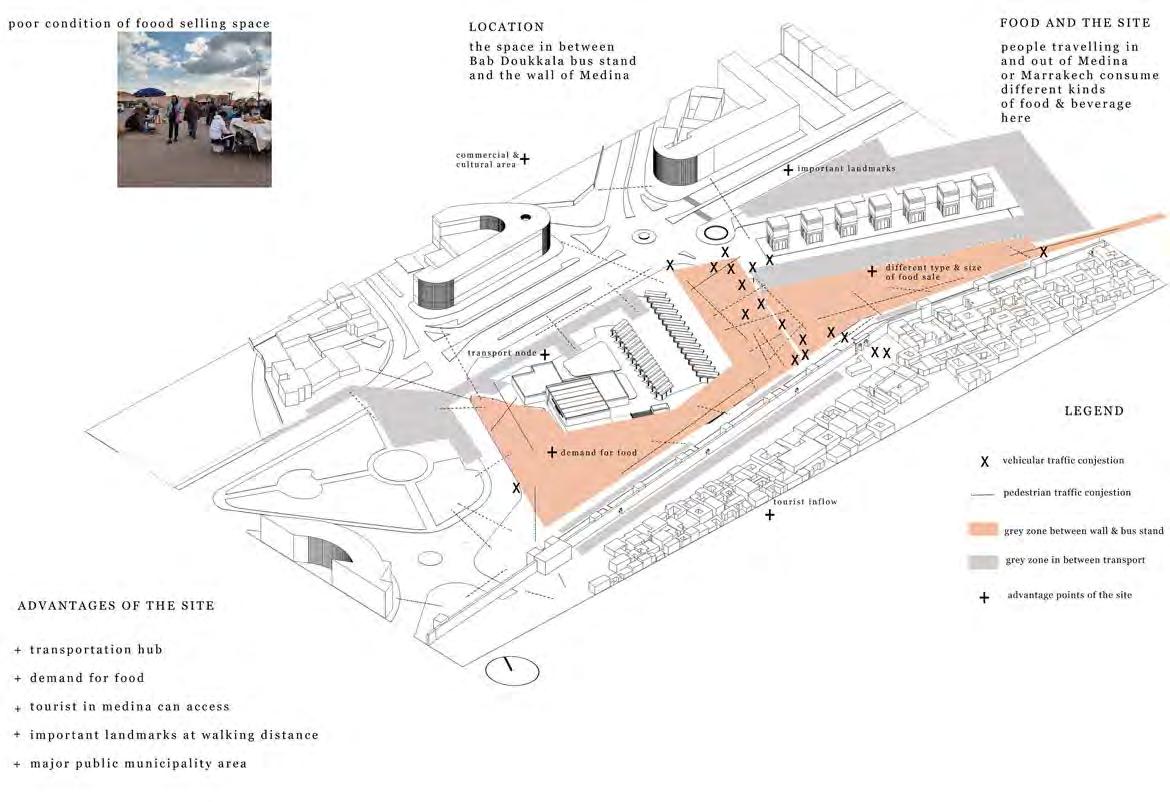
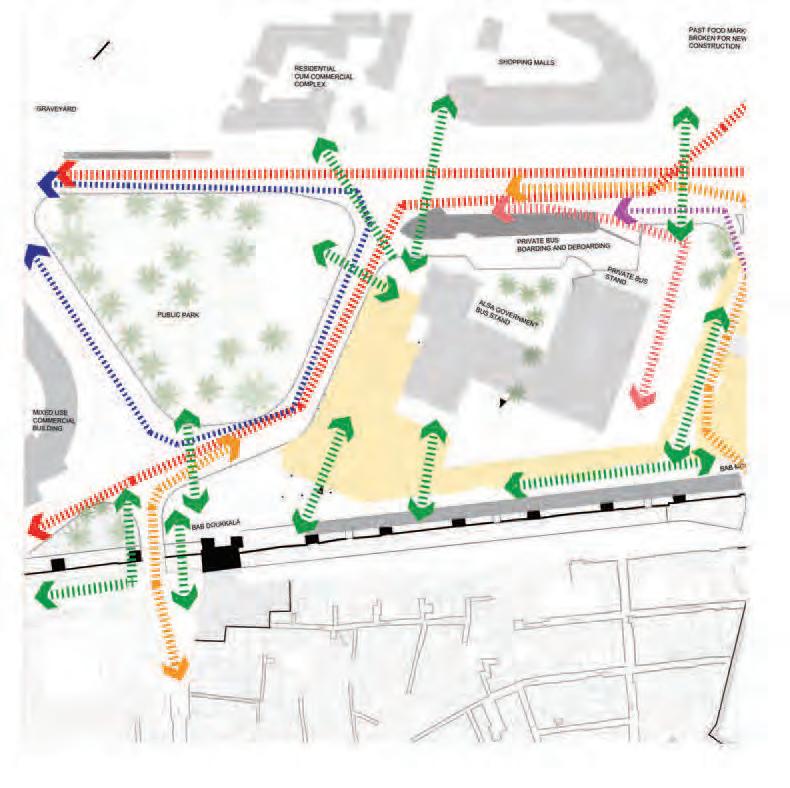
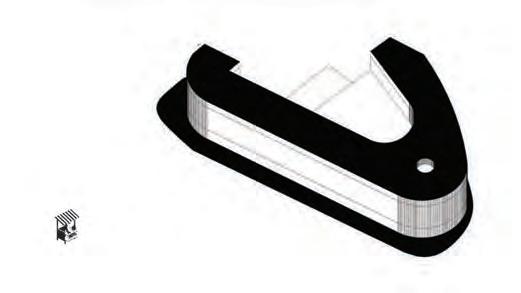
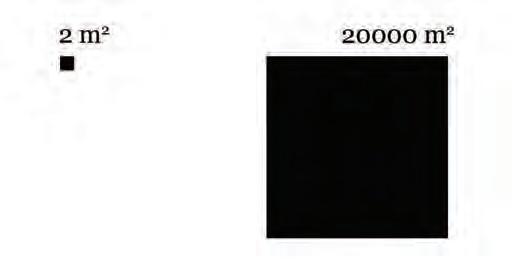
86 87
fg44 fg45
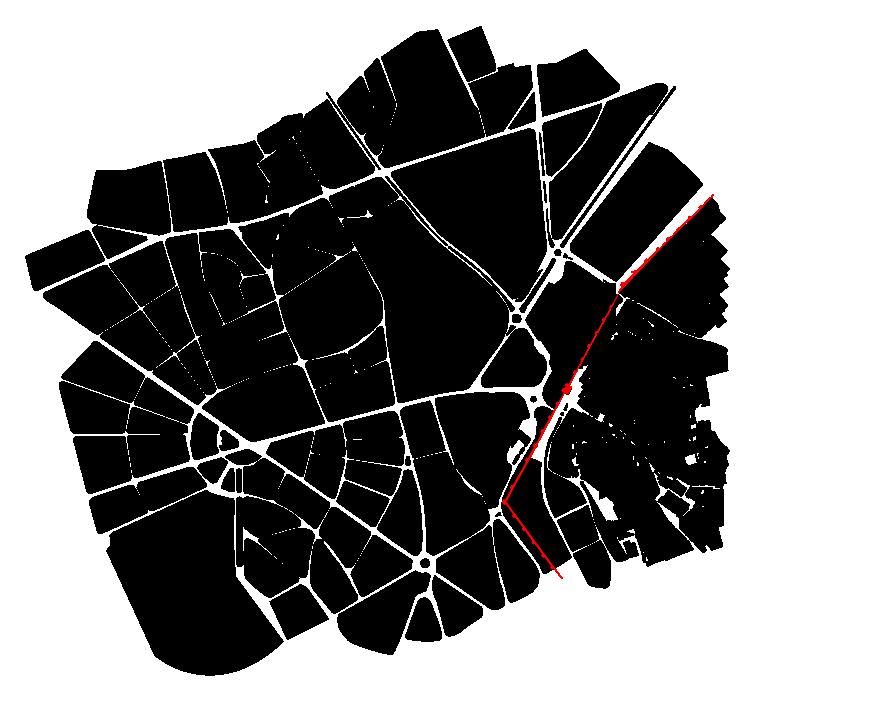


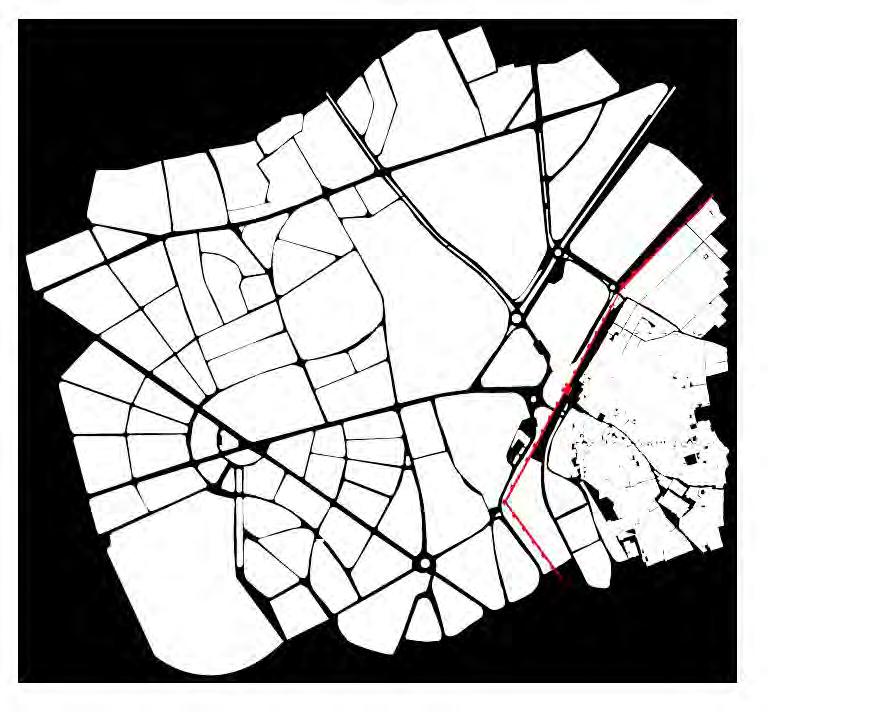
88 89 Studies of morphology
Built up imprint
Blocks
Infrastructure fg46
Open spaces
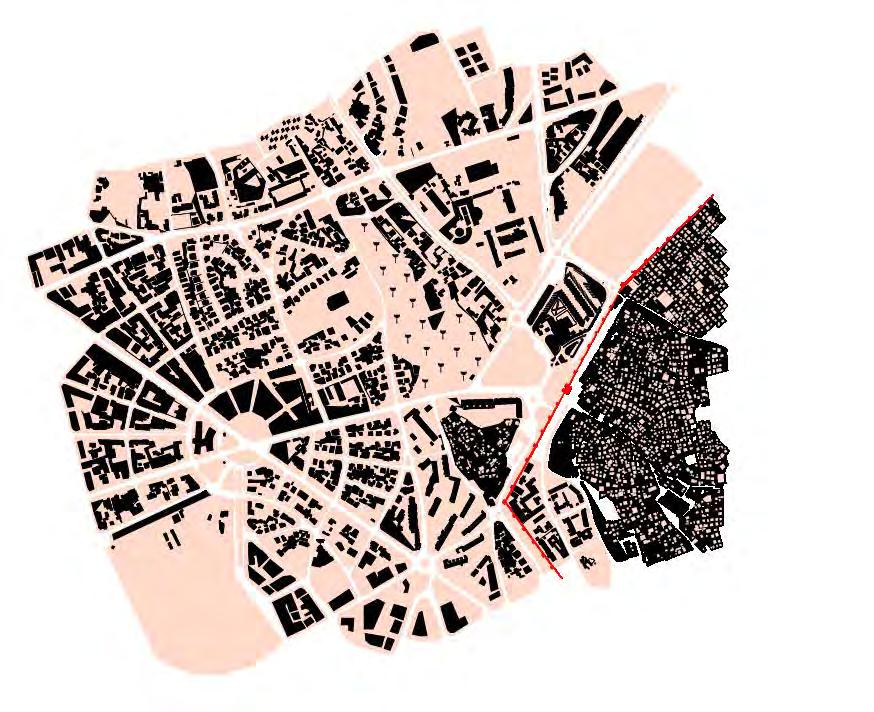
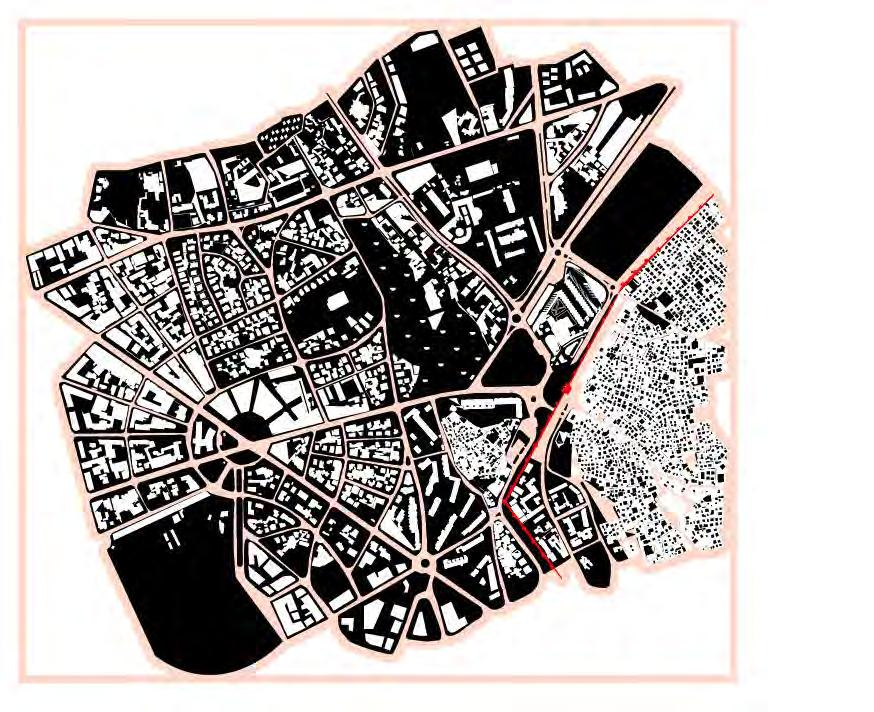
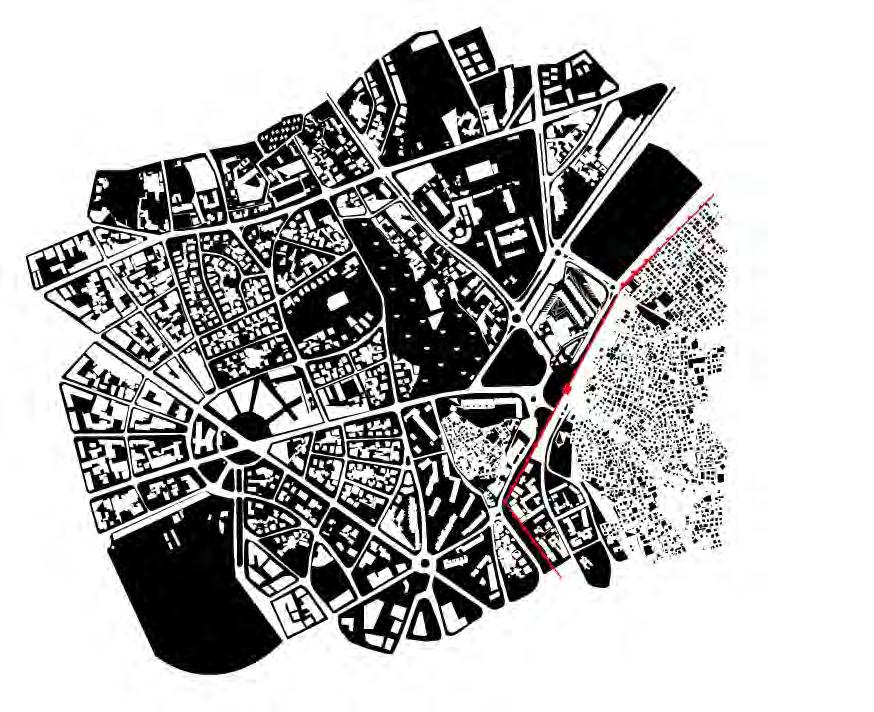
90 91
Unbuilt block spaces
Built up space + blocks
fg46
Unbuilt space + blocks
3.4 Urban strategy
URBAN KNOTCH: Linking the garden by a Underground tunnel opening up to existing public park with a defned sense of approach and monumental staircase , A pop up wall with vibrant color in a urban space as a demarcation of underground urban space. We have assigned ownership of the subway spaces to existing book stall near the wall, who will be relocated which gives the sense of privatization to the space and avoids illegal activities and keep tunnel user friendly. We have also introduced light wells and light courtyards to enhance living quality.
RECESSED PUBLIC SQUARE: As second intervention we made a proportional sunk in the available empty land around the existing built form of land foot print which acts as a urban container to cater existing functional overlapping of spaces and provide a cavity space for private shop ownerships for longer run and restates for the medinas tourist and travelers, contextual user group.
BARRIER FREE ACESS: As a third intervention we have worked out on vertical travel of people in an unconscious sense by providing cascading steps and introducing new functions like fruit and vegetable shops which was already existing the same location and has been articulated and relocated in new design.
COMMUNITY CANOPY: This is the negative volume of space consciously created by contextual design devices like roof being one side and wall being another physical barrier where the triangular plaza is acting as urban courtyard which pulls existing informal urban crowd and unorganized economical modules which will result in enhancing the quality of public space.
TRANSPORTATION INTERGATION : As per the agenda of our problem setting, vehicular and pedestrian circulation pattern is one of the major issue which needs to be addressed, resulting we have connected and integrated the exiting city bus stop by a tunnel extension from park and creating a shade canopy for the travelers gives a strengthened connection between our intervention , bus stop , taxi station and city bus stop.
ADAPTIVE DESIGN: Getting the borders of the new parcel defned We make sure that becuase the bus station is not going to be there forever, to give enough space for manouvering for whatever other public building comes there on that parcel. Managing the space in time gives possibilities for further development and articulation.


96 97
fg53






98 99
1. Built area context
2. In between land
3. Creation of levels
4. Connections
5. Creation of shade
fg54
6. Creation of spaces for informalities


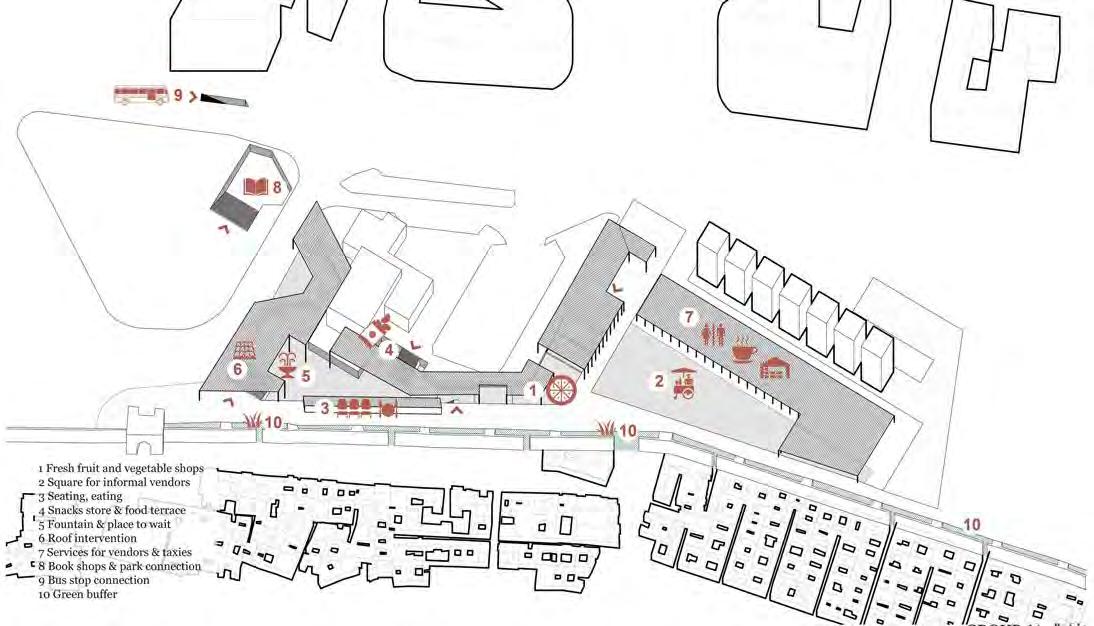
100 101
fg55
Future usage of parcel
fg55 fg56
3.5 The Markets as Urban Architecture
Nowadays with all our consumer needs just a click away, the notion of ‘real time’ shopping in physical shops is under threat, a threat made even more impending considering the homogenization of the high street. Certain retail typologies however appear to be bucking the trend. The local market, whether accommodated within an architectural set piece or informally organized within the existing urban context, is not only surviving but thriving. Our intervention in Bab Doukkala, Marrakech will illustrate how architecture, a space of sensory experience, social interaction and three-dimensional poetry, can revitalize and channel a program that not only goes far beyond retail, but advocates shared spaces that bring disparate communities together. Hence in an era that is luring African cities toward a global constellation of mega-cities, the urbanization of traditional aspects of society, such as the marketplace, provide an identity to local commerce not found in many contemporary urban developments.

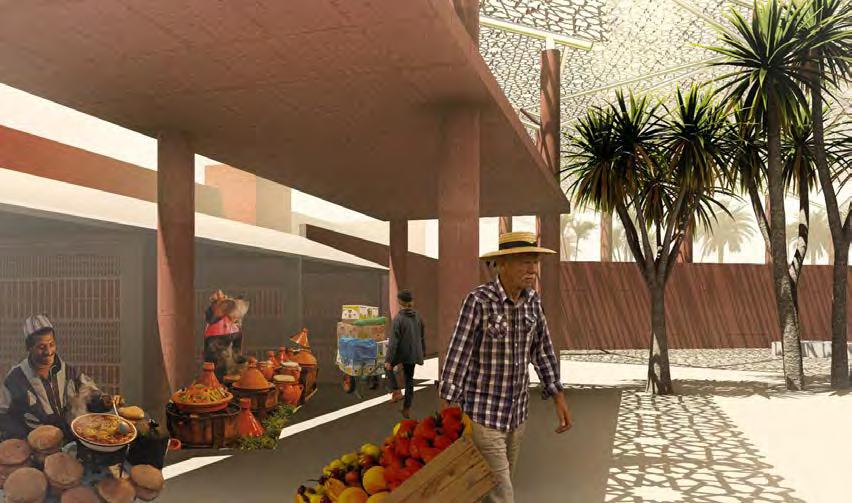
102 103
fg57 fg58
3.6
Hybrid
spaces: in-between the formal and the informal
Our urban spatial intervention justifes the notion of hybrid space because of its capability of serving existing multi functional urban spaces in a single container which is architecturally articulated to increase the efciency of the space used, As a general overview the site will witness and address diferent socio economical strata of the user group in one junction of space
SOCIO ECONOMICAL PARAMETERS: the site becomes meting point for two layers of society one being medina and other being contemporary high class crowd.
FUNCTIONAL COMPLEXTY : The intervention area is flled with too many layers of functions , like bus stand, Taxi station, foot ball grounds, city bus sop, park, medina, shopping mall which has its own user groups and their food needs
SPATIAL ORGANIZATION: with plenty of empty space creates a new problem of informal accumulation of economical modules like vegetable shops, book shops, textile shops ectwhich need a organization.
NATIVE USER GROUPS AND THEIR SPACIAL NEEDS: As site has functional complexity the service men’s who cater to the user group is also a crowd by itself who needs a service space requirements

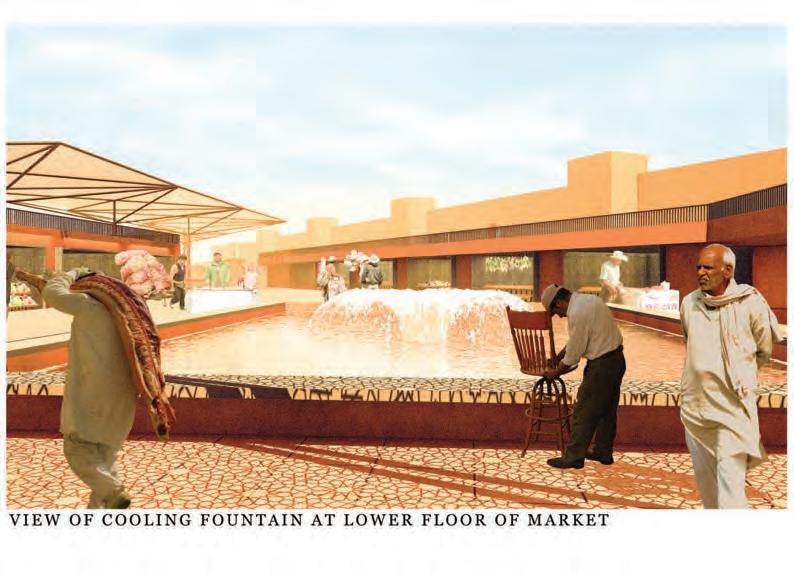

104 105
fg59
3.7 Transport as a primary foundation to food mobility
As per our urban analysis and on site analysis we found that the intervention area being part of transportation hub as a primary functional parameter which provides us the maximum of foot print , as per study of commuters and travelers we fgured out few daily life pattern, where people are directly or indirectly interconnected between transpiration hubs and food.
Case 01: A person travelling outside destination of Marrakech will buy vegetables and fruits available near the intervention every time he visits Marrakech
Case02: Florigen visitors travelling in Taxies and city bus stand during their start and end of the trip will happen from the food hub , where they will buy a snack or breakfast.
Case03(secondary user group): Medinas Tourist who are staying in Raids need a cultural food exploration near to their stay , they will choose our intervention.
Case04(Tertiary user group): The site itself has a potential foot print of people like taxi and bus drivers, servicing community, vendors themselves , need a daily routine of food pattern
Case05:(Public Gatherings) :Bab Doukkalagenerally is a place for public gathering which pulls lots of crowd every often and during festivals and national events with which shopping mall will also cater few group of people who like to explore traditional food

106 107
fg60

108 109 fg61
3.8 The architectural strategy
The architectural infrastructural element of tunnel, underpass , staircase was used to create a semi basement to link the diferent grades of trafc and pedestrian fow in and around the site. While having a architectural preservation strategy of protecting the Seven Saints towers, the access to the taxi stand was refned and organized using street networks and level diference. In order to facilitate shading in the hot arid climate of Marrakech, large canopy with overhangs was used to protect from Sun and Rain . At the same time it will provide an open airy volume for marketplace activity . The Barrier Free design was facilitated by the large cascading steps in the central portion of the site along with a ramp that leads people to the semi basement without a sharp level drop cognition . The landscape feature in the semi basement allow for passive cooling using fountains and optional water channels that have been inspired from the traditional Islamic fountains and water basins of Marrakech.
A bufer space of 20 meters have been given from the wall of Medina in order to restrict encroachment of the wall perimeter . Also greenery has been given with promenade for people to appreciate the historic wall on one side and the market place activity subtlety happening at semi basement level on the other


2 community canopy

3 recessed square
111
fg61 1 subtle level promenade
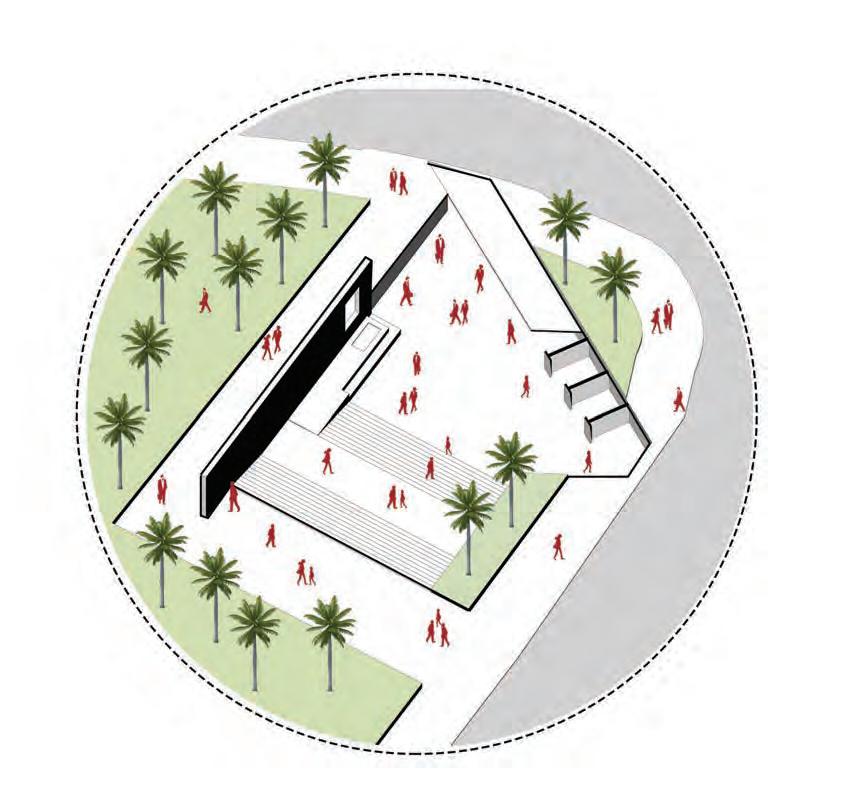
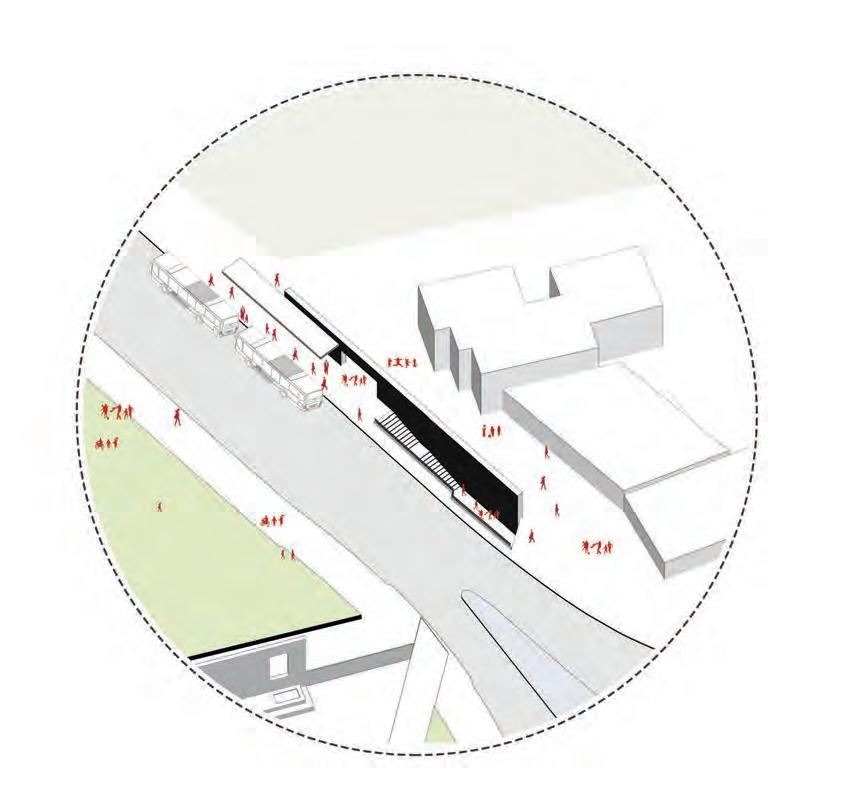
112 113 4 transport integration
fg61
4 park recessed square

114 115
fg62
3.9 The Design Masterplan
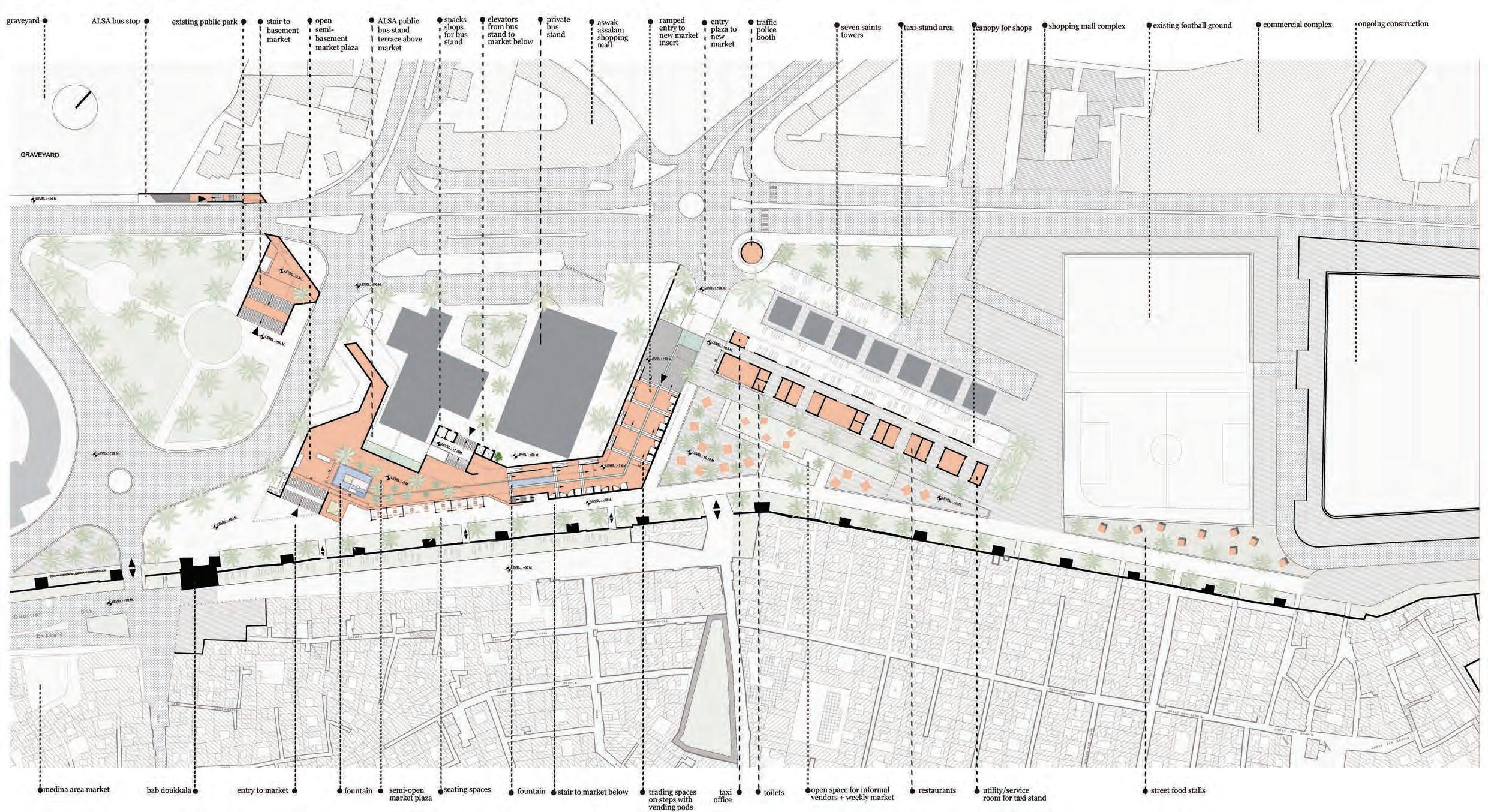
116 117
fg63
Groundfoor plan
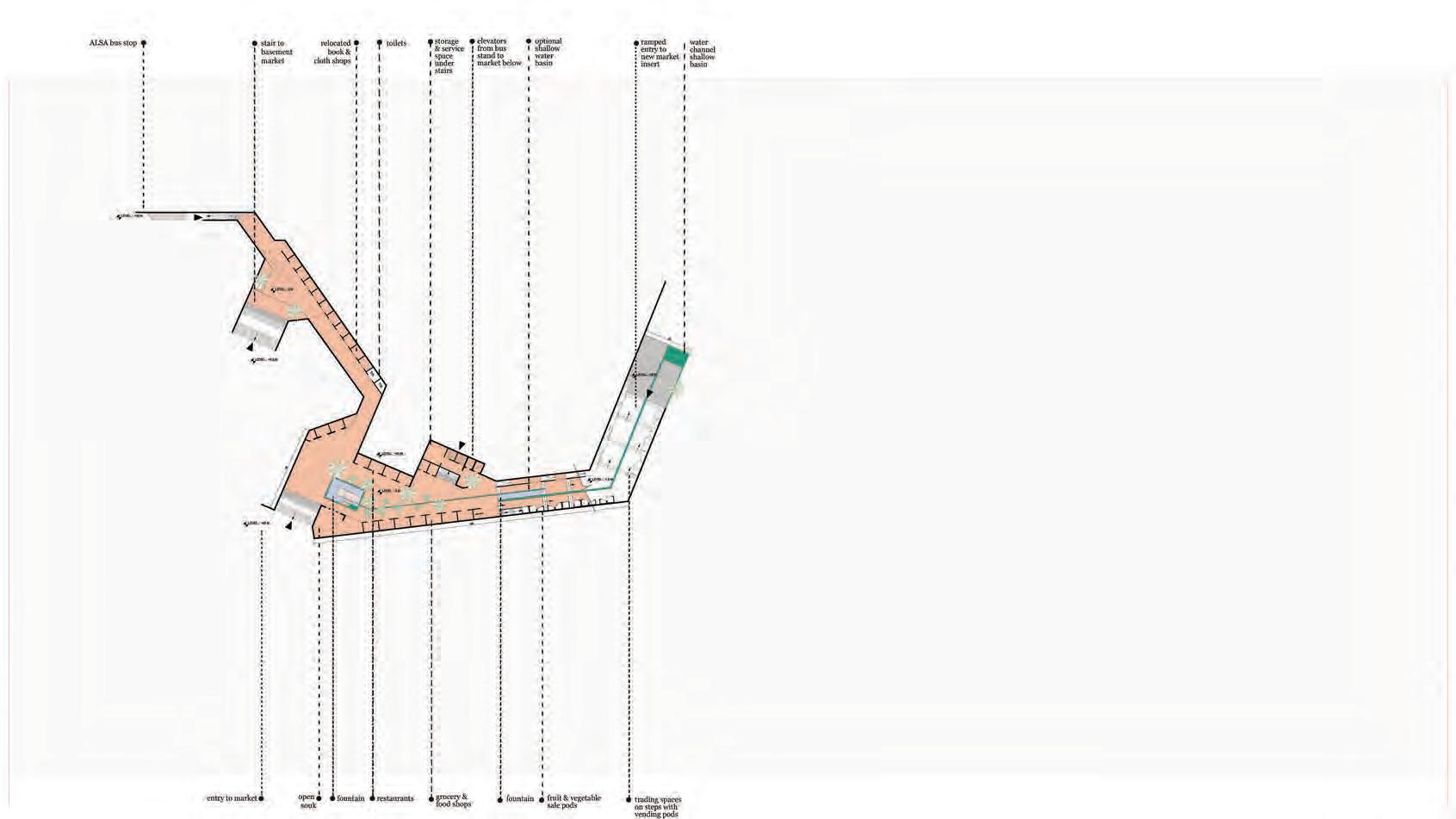

118 119 Underground foor plan
New
fg64 fg65
Medina
city Empty lands New city


120 121 fg66

122 123 fg67




References and bibliography
Cohen, N. 2016. ‘Urban Agriculture for One New York’. http://www.hufngtonpost.com/ nevin-cohen/ urban-agriculture-for-one_b_8913140.html
Cohen, N. and Wijsman, K. 2014. ‘Urban Agriculture as Green Infrastructure: The Case of New York City’, Urban Agriculture Magazine 27: 16–19.
Adidi, A. (2011), “De l’aménagement du territoire au développement territorial: Quelle transition et quelle articulation? ”, Archive ouverte en Sciences de l’Homme et de la Société, 1ère Conférence Intercontinentale d’Intelligence Territoriale, October, Gatineau, Canada. pp. 11,
Breisinger, C. et al. (2012), Beyond the Arab Awakening: Policies and Investments for Poverty Reduction and Food Security, Food Policy Report, International Food Policy Research Institute, Washington DC,
Economic Commission for Africa (2012), “La sécurité alimentaire en Afrique du Nord: Analyse de situation et réactions des états face à l’instabilité des marchés agricoles”, presented at the 27th session of the Comité intergouvernemental d’experts (CIE), Economic Commission for Africa, Ofce for North Africa, Rabat, Morocco, FAO, Ministry of Agriculture and World Bank (2006), “État des lieux de la mise en oeuvre de la Stratégie 2020”,
Ghanem, H. (2015). “Agriculture and rural development for inclusive growth and food security in Morocco”, Global Economy & Development Working Papers, No. 82,
Mansour, S. and V. Castel (2015), Morocco 2015, African Development Bank.
Mansour, S. and V. Castel (2014), Morocco 2014, African Development Bank.
Ministère de l’Agriculture et de la Pêche Maritime (2010), “Stratégie de développement des zones oasiennes et de l’arganie”.Ministère de l’Économie et des Finances (2014), Projet de Loi de fnances pour l’année
Altman, L., Barry, L., Barry, M., Kuhl, K., Silva, P. and Wilks, B. 2014. Five Borough Farm II: Growing the Benefts of Urban Agriculture in New York City. New York: Design Trust for Public Space. Angotti, T. 2009. ‘Zoning without Planning?’, Gotham Gazette. Accessed 5 June 2009.
Koolhas, R., Mau, B. 1995. “S,M,L,XL”. Monacelli Press, New York.
Anguelovski, I. 2016. ‘Healthy Food Stores, Greenlining and Food Gentrifcation: Contesting New Forms of Privilege, Displacement and Locally Unwanted Land Uses in Racially Mixed Neighborhoods’,
Cohen, N. 2014a. ‘Policies to Support Urban Agriculture: Lessons from New York and Detroit’, in
Second Nature Urban Agriculture: Designing Productive Cities, edited by A. Viljoen and K. Bohn, 138–45. New York: Routledge


 THE FOOD OASIS MUNICIPAL MARKET AT BAB DOUKKALA MARRAKECH
Dipon Bose
Ivo Lazarski
Piotr Soltys Prajwal Mathad
THE FOOD OASIS MUNICIPAL MARKET AT BAB DOUKKALA MARRAKECH
Dipon Bose
Ivo Lazarski
Piotr Soltys Prajwal Mathad




























































































































